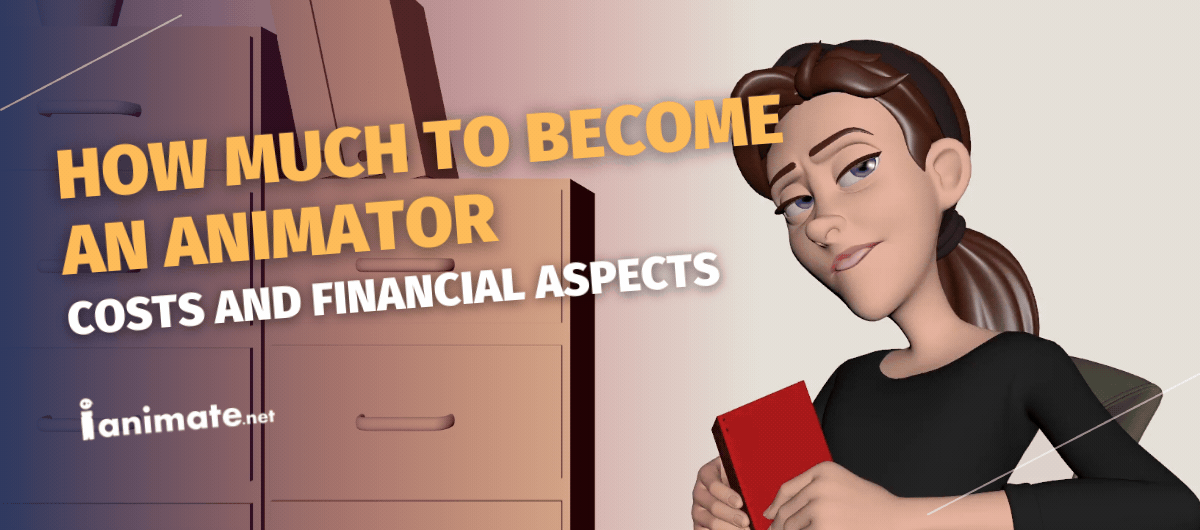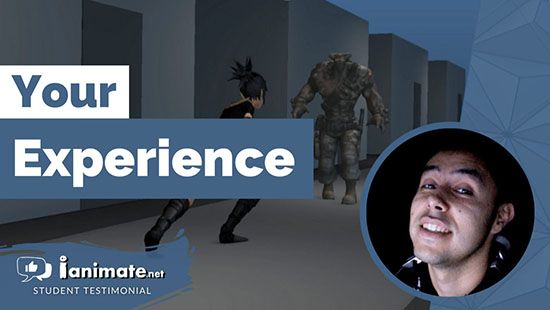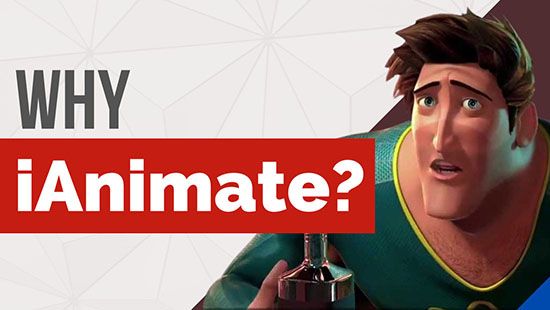How Much to Become an Animator: Costs and Financial Aspects
Article by Richard Arroyo & iAnimate Team
Discover the journey to become an animator and explore the costs and financial aspects. Uncover the advantages of online animation education like iAnimate.

How Much Does It Cost to Become an Animator
The world of animation is vibrant, dynamic, and full of opportunities. Whether you want to become an animator creating the next big animated film or crafting captivating video game graphics, a solid education in animation can set you on the path to success. But, like any significant endeavor, it's essential to understand the financial investment required. So, how much does it cost to study animation? Let's break it down.
Factors Affecting the Cost of Studying Animation
When considering the cost of an animation education, several factors come into play. These include tuition fees, the location of the institution, the type of institution (public or private), and additional costs such as materials and software. Each of these elements can significantly influence the overall cost.
Tuition Fees
To become an animator, tuition fees are often the most substantial part of the cost. On average, tuition for animation programs can range from $10,000 to $50,000 per year. This wide range depends on the institution and the program's prestige. For example, schools like the California Institute of the Arts (CalArts) and Ringling College of Art and Design are known for their top-tier animation programs, but they also come with higher tuition fees.
In contrast, state universities and community colleges tend to offer more affordable options. For instance, tuition at the Savannah College of Art and Design (SCAD) is around $41,000 per year, while in-state tuition at a public university like the University of California, Los Angeles (UCLA) is approximately $15,000 per year.
Location of the Institution
The cost of living in the institution's location is another critical factor. Studying in a city like Los Angeles or New York City, where living expenses are high, can add significantly to your overall cost. Rent, food, transportation, and other living expenses can sometimes equal or even exceed tuition fees.
On the other hand, studying in a smaller town or a less expensive city can help reduce these costs. For example, attending an institution in the Midwest or South of the United States generally comes with lower living expenses compared to coastal cities.
Type of Institution
Public and private institutions differ not only in their educational approaches but also in their cost structures. Public universities are typically funded by the state and offer lower tuition rates for in-state students. Private institutions, while often more expensive, may provide more personalized attention, smaller class sizes, and more extensive resources.
For example, in-state tuition at a public university like the University of Florida is around $6,300 per year, whereas tuition at a private institution like the School of Visual Arts in New York City can be upwards of $40,000 per year.
Additional Fees and Costs
Beyond tuition, there are several additional costs to consider:
- Materials and Supplies: Animation students often need specialized materials such as drawing tablets, sketchbooks, and software licenses. These can add up to several thousand dollars over the course of a program.
- Technology and Software: High-quality computers and animation software like Adobe Creative Suite or Autodesk Maya are essential tools for animation students, which can cost several hundred to a few thousand dollars.
- Field Trips and Extracurricular Activities: Many programs offer field trips, workshops, and other activities that can enhance your learning experience but also come with additional costs.
Financial Aid and Scholarships
Fortunately, there are many financial aid options available to animation students. Scholarships, grants, and loans can help mitigate the costs. Scholarships specific to animation students include the Animation Career Review Aspiring Animation Professional Scholarship and the Academy of Interactive Arts & Sciences Foundation Scholarship.
To apply for these, you typically need to demonstrate academic excellence, artistic talent, and sometimes financial need. It's also crucial to fill out the Free Application for Federal Student Aid (FAFSA) to determine your eligibility for federal aid.
Online Animation Programs
Online programs can offer a more affordable alternative to traditional on-campus programs. These programs often have lower tuition fees and eliminate the need for relocation or commuting costs. For example, Full Sail University offers an online Bachelor of Science in Computer Animation for around $60,000 for the entire program, which is significantly less than many on-campus programs.
Moreover, amidst the myriad of options available, consider the immense benefits of choosing an online animation school like iAnimate. Not only do they offer lower tuition fees compared to traditional brick-and-mortar institutions, but they also provide the flexibility of online sessions that you can attend from anywhere in the world. Imagine sitting in your own space, absorbing knowledge from industry veterans who have walked the very path you aspire to tread.
But perhaps the most compelling aspect of iAnimate is the opportunity to craft a stellar demo reel in just 11 weeks. This isn't just about acquiring skills; it's about honing them to perfection under the guidance of seasoned professionals. It's about transforming your passion for animation into a tangible masterpiece that speaks volumes about your talent and dedication.
Community Colleges and Technical Schools
Community colleges and technical schools can be a cost-effective way to start your animation education. These institutions typically offer lower tuition rates and can provide a solid foundation in animation. Many students choose to complete their general education requirements at a community college before transferring to a four-year institution.
For example, a two-year Associate's degree in Animation from a community college might cost around $6,000 in total, compared to the tens of thousands you might spend at a four-year institution.
International Students
International students often face additional costs, including higher tuition rates, visa fees, and travel expenses. Many institutions charge international students out-of-state tuition rates, which can significantly increase the overall cost. Additionally, international students need to budget for visa application fees, which can be several hundred dollars, and travel expenses, which can vary widely depending on the student's home country.
Return on Investment (ROI)
Investing in an animation degree can pay off in the long run. The animation industry is booming, with numerous opportunities in film, television, video games, and advertising. Entry-level animators can expect to earn around $50,000 per year, with the potential for significant salary increases as they gain experience.
The job market for animators is also promising. According to the U.S. Bureau of Labor Statistics, employment for multimedia artists and animators is projected to grow by 4% from 2021 to 2031, which is about as fast as the average for all occupations.
Budgeting Tips for Animation Students
Creating a realistic budget is crucial for managing the cost of studying animation. Here are some tips:
- Track Your Spending: Keep a record of all your expenses to identify areas where you can cut back.
- Find Part-Time Work: Many students work part-time jobs to help cover their expenses. Look for opportunities related to animation to gain experience while earning money.
- Use Student Discounts: Many software companies and retailers offer discounts for students. Take advantage of these to save on essential supplies and technology.
- Plan for Future Expenses: Consider future costs such as relocation for internships or job opportunities, and start saving early.
Conclusion
In conclusion, embarking on a journey to become an animator is not merely about mastering the craft; it's a profound investment in your future filled with endless possibilities. As you navigate through the complexities of choosing the right institution and managing the associated costs, remember that every penny spent is an investment in your dreams and aspirations.
For students and parents alike, the decision to pursue a career in animation can feel daunting at times. But remember, behind every daunting challenge lies an opportunity for growth and fulfillment. So, as you take the leap into the world of animation, trust in your abilities, embrace the journey ahead, and know that with the right education and unwavering determination, the sky's the limit.
FAQs (Frequently Asked Questions)
Q1: How much does it cost to study animation in the US?
A: The cost can range from $10,000 to $50,000 per year, depending on the institution and location.
Q2: Are there affordable animation programs available?
A: Yes, community colleges and public universities often offer more affordable options compared to private institutions.
Q3: What are the best scholarships for animation students?
A: Some notable scholarships include the Animation Career Review Aspiring Animation Professional Scholarship and the Academy of Interactive Arts & Sciences Foundation Scholarship.
Q4: Can I study animation online and save money?
A: Yes, online programs can be more affordable and eliminate relocation and commuting costs.
Q5: What should international students consider financially?
A: International students should consider higher tuition rates, visa fees, travel expenses, and the cost of living in the host country.






